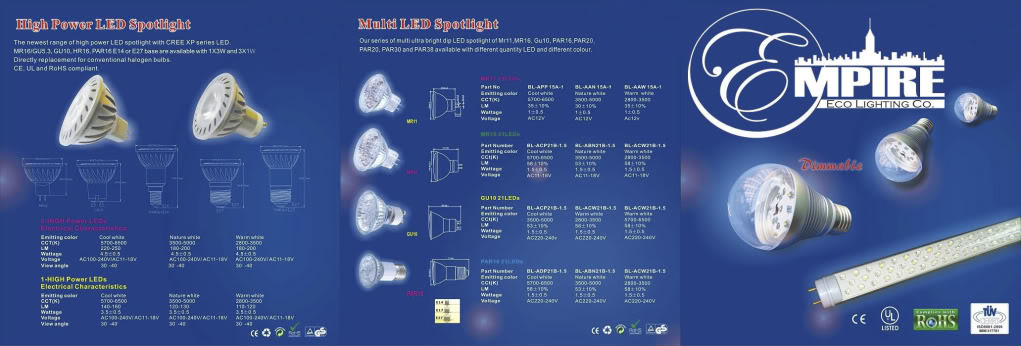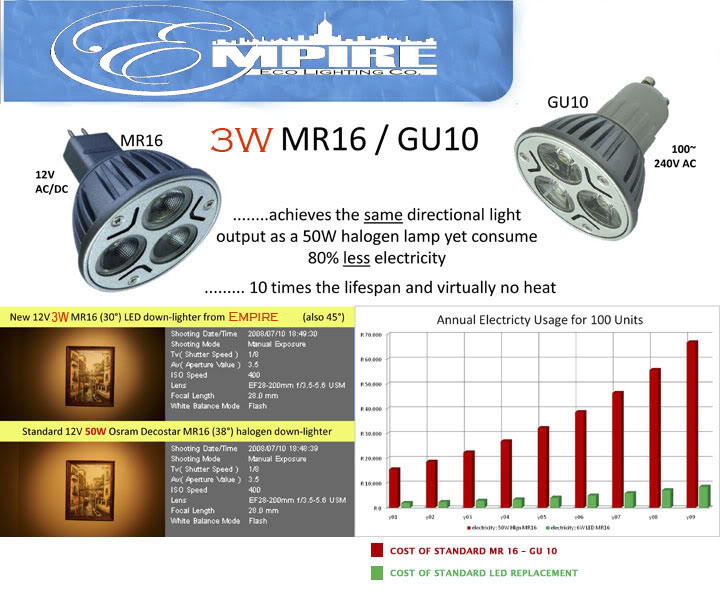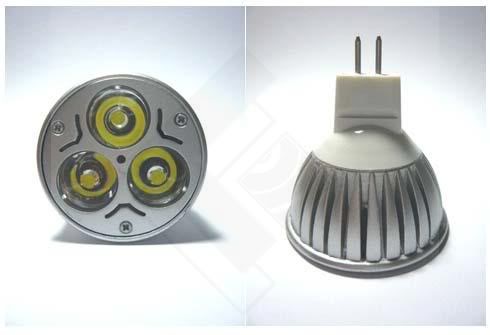Pine wrote:Households in SA run 220V AC (Alternating current) and LED's are normally low voltage DC (Direct current). So do you need some converter to install these lighting, or do they have their on mini converters (per item). Will you be able to run a few of these (bulbs?) together with conventional Edison bulbs in the same household?
These LED bulbs are available in both 12v or 220v & as such, all that is required for existing applications is merely replacing your halogens with the LED variety.The MR16 ( 12v ) and GU10 (220v) need no special hardware to be installed ( your existing setup will work as is ) Yes these will work in conjunction with conventional bulbs in your household.
A few points to keep in mind :
1. CFLs (compact fluorescent lamps)
2. LEDs (light emitting diodes)
CFLs don’t cost a great deal to purchase, and because they have been around for a few years now many of the initial problems have been at least mitigated to some extent.
However, to most people CFL light bulbs still seem ungainly, oversized or downright ugly (they still won’t fit in smaller light fixtures, poke out above lampshades and CFLs cannot be used at all in low voltage MR16 fittings). Also, despite many efforts to improve the light quality of CFLs many people remain unconvinced and dislike them for this reason.
Other aesthetic issues with CFL energy saving bulbs include the fact that they are not for the most part dimmable and that like regular fluorescent tube lights (from which they are derived) many folk report eye-strain and headaches from the flicker and there have even been reports of CFL’s triggering epileptic fits.
All the above issues with CFL light bulbs can be addressed one way or another over time, but the fact that being filled with mercury vapor is a fundamental part of the design of CFLs is a particularly nasty issue that is especially hard to escape. Breaking a single CFL low energy light bulb is unlikely to cause you significant harm, but the cumulative effect of millions of people eventually disposing of old CFL light bulbs with their mercury vapor still intact is far from insignificant.
LEDs - Three important points to bear in mind about the higher price for low energy LEDs as compared to incandescent and energy saving CFL light bulbs.
First, the price difference reflects the fact that the use of LED for general purpose domestic lighting is still quite novel, though increasing manufacturing levels and consumer take-up will drive the price down dramatically once both come fully on stream over the coming months.
Second, and partially related to the observation above, is that the cost of LEDs drops by a factor of twenty over the course of each decade. This characteristic is reliably predicted by Haitz's Law (very similar to Moore's Law for computer chips and for similar reasons, principally because LEDs are, just like computer chips, pure electronic devices). Haitz also states that LED performance (amount of light per watt of electricity) increases tenfold over the same decade.
Third and perhaps most intriguing is the fact that as far as the cost of domestic lighting is concerned, the price of light bulbs is almost entirely irrelevant. It is an extraordinary yet easily provable fact that even if regular light bulbs were totally free and LED lights cost, let's say something outrageous like R500 each, it would still be vastly more economical to purchase LED low energy lights.
The reason for this is simple: the cost of electrical lighting is the cost of the energy i.e. electricity. It matters not one jot what the actual light bulbs cost; it's what it costs to run them that really counts. Also, since LEDs last for tens of thousands of hours (in practice, decades of use) you only need to pay the purchase price once, unlike regular bulbs which last only upto two thousand hours or just over one year.
The second biggest gripe about low energy LED lighting is light levels and quality, or in technical parlance luminosity and light color.
To understand what this means, consider that a standard 40w incandescent bulb delivers about 360 lumens and a 60w bulb about 540 lumens, which gives a ratio of 9 lumens per watt. Anything that offers greater than 25 lumens per watt can be classed as an energy saving light bulb. Certain LED light bulbs consume up to 6.7 watts and thus produce 6.7 * 80 lumens per watt which is 536 lumens, on a par with the standard 60w incandescent light bulb.
So you could, right now, replace all your 60w light bulbs with LED light bulbs rated at 6.7 watts and consume 1/10th (or 90% less) electricity. And remember Haitz's Law? Because of performance improvements, eighteen months from now you should be able to obtain the same 60w worth of lighting from just 3 watts !!!








